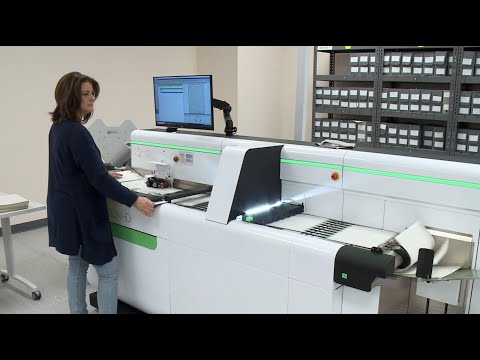The National Archives is partnering with the genealogy company Ancestry to digitize and index tens of millions of US records related to the military, immigration history, and Indigenous communities. And while the public-private project is estimated to take roughly 5 years to complete, that’s roughly 10 times faster than it could have taken without the Archives’ newest tech tools.
Announced on Thursday, organizers intend to make an initial 65.5 million documents available online within two years, including World War II and Korean War era military files, as well as immigration and naturalization reports. Much of this information will initially remain on Ancestry’s various websites, although they will eventually make their way onto the publicly accessible National Archives database.

“The National Archives is the nation’s record keeper, and we hold billions of stories in our collection. Our mission is to preserve, protect, and share those stories with all Americans,” US archivist Colleen Shogan said through an official announcement.
Speaking with The Washington Post today, National Archives’ chief innovation officer Pamela Wright explained these ongoing digitization efforts make previously inaccessible information easier to locate for researchers and families. “It’s a geographic barrier for a lot of people,” said Wright, “and making it digital… democratizes access to the records.”
To accomplish the undertaking, workers will rely on the National Archives’ recently renovated, 18,000-square-foot digitization center in College Park, Maryland, which held its formal ribbon cutting ceremony last month. The massive facility houses new high-speed scanners and overhead camera systems capable of processing multiple record formats as much as 10 times faster than the previous equipment. Without them, the National Archives almost certainly couldn’t meet their current goal of digitizing and making 500 million pages of records available to the public by September 2026.
[Related: A ‘bionic eye’ scan of an ancient, scorched scroll points to Plato’s long-lost gravesite.]
This month, archivists will reportedly begin with naturalization petitions from US immigrants who served in the military between 1918 and 1947. According to CIO Pamela Wright, these troves can provide everything from an individual’s rank and unit, to their serial number and place of entry into the military.
All that resultant information will also help fill in the sizable, decades’ old gaps created in the wake of a major fire at the National Personnel Records Center in St. Louis in 1973. Over 15 million military files—including 80 percent of information on soldiers discharged between 1912 and 1960—were lost during the blaze.





